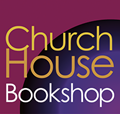Sermons at Court
Politics and Religion in Elizabethan and Jacobean Preaching
This item is a print on demand title and will be dispatched in 1-3 weeks.
Paperback
£24.99
QTY
Publisher: Cambridge University Press
ISBN: 9780521022057
Published: 28/04/2011
This 1998 study describes the most neglected site of political, religious and literary culture in early modern England: the court pulpits of Elizabeth I and James I. It unites the most fertile strains in early modern British history - the court and religion. Dr McCullough shows work previous to his own underestimated the place of religion in courtly culture, and presents evidence of the competing religious patronage not only of Elizabeth and James but also of Queen Anne, Prince Henry and Prince Charles. The book contextualises the political, religious and literary careers of court preachers such as Lancelot Andrewes, John Donne and William Laud, and presents evidence of the tensions between sermon- and sacrament-centred piety in the established Church period. Additional web resources provide the reader with a definitive calendar of court sermons for the period.
Review of the hardback: '... a distinguished and important book ... it throws a flood of light on to one of the golden ages of English preaching.' Church Times Review of the hardback: 'This is a wonderful resource and will be of great assistance to any scholar who wishes to explore the religious, ecclesiastical and political history of this period.' Paregon Review of the hardback: '... a remarkably fine study.' William Lamont, English Historical Review Review of the hardback: '... rich book, full of intriguing details about court preaching. The book skilfully combines institutional history with an informed reading of sermon texts and mixes social and political with literary analysis. The book is very well written while maintaining the highest standards of scholarship in terms of references to original sources as well as to secondary literature. It is a compact study which historians about English court culture around 1600 will use for a long time to come ... One could only wish that other historians would take up this lead to examine other European courts in this perspective.' D'Histoire Ecclesiastique






